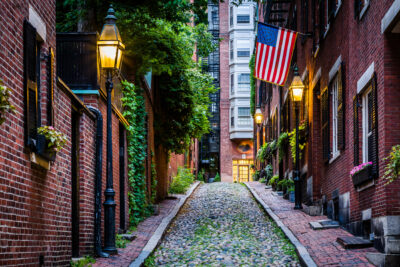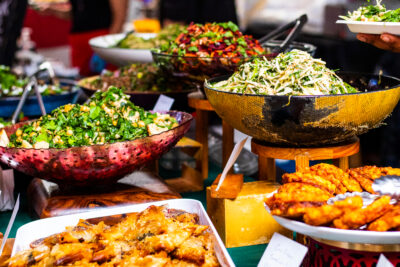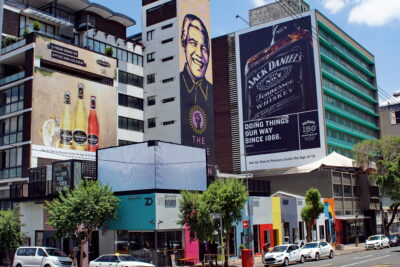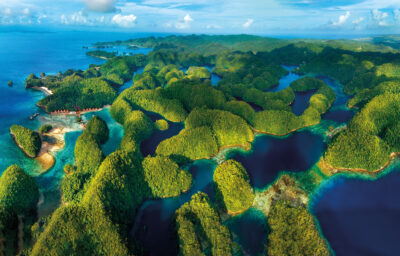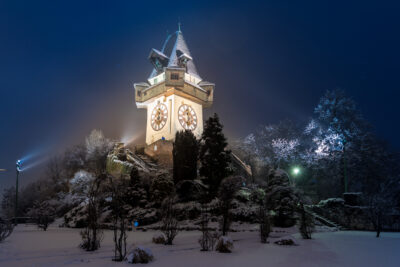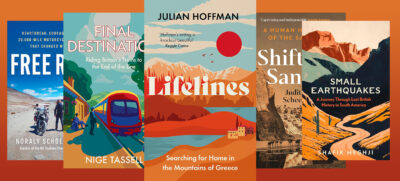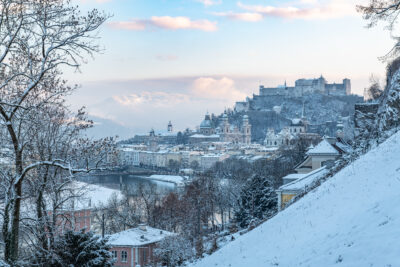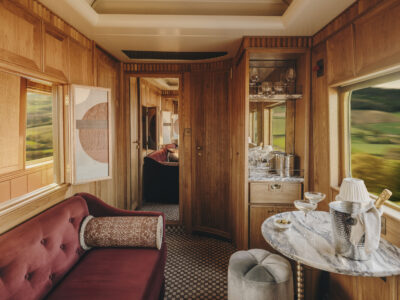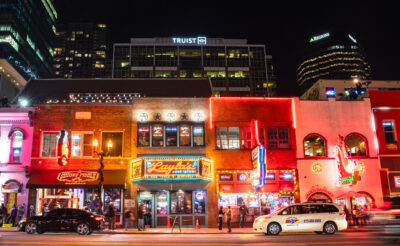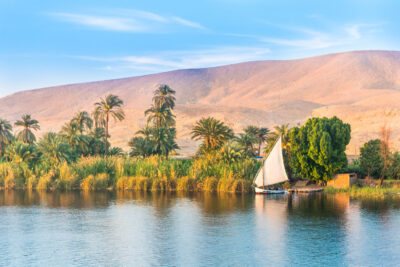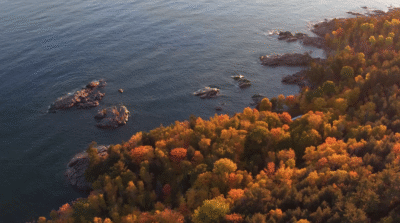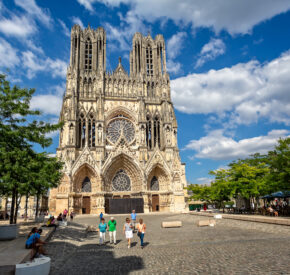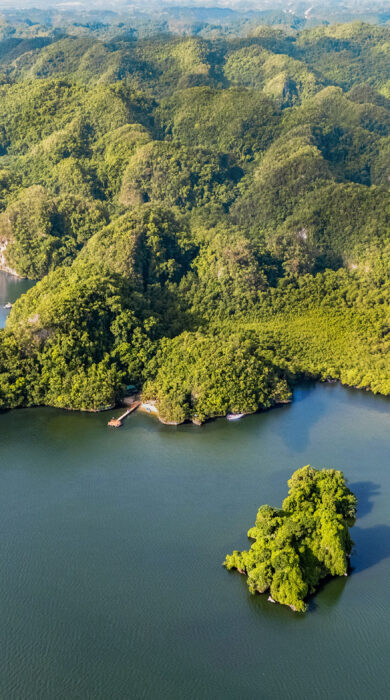
9 ways to experience the best of the Dominican Republic
With its palm-fringed beaches, delicious criolla cuisine and electric culture, there’s so much to discover in the Dominican Republic. What’s more, with Air Europa’s new flights to Santiago de los Caballeros, there’s no better time to visit
From the dreamy, untouched beaches of the west coast to the diverse wildlife found in Jaragua National Park, the Dominican Republic remains one of the Caribbean’s most untapped destinations. You’ll find refined glamour in Punta Cana, but further afield there are enticing adventures to be had, whether it’s whale–watching at Samaná Bay, discovering the cascading waterfalls of Damajagua or dancing to the island’s infectious Merengue beats. Touching down in Santiago de los Caballeros, Air Europa’s new route from Gatwick puts you in the heart of the action. The third largest Spanish airline offers a pristine and comfortable flying experience on board, so you’ll arrive ready to soak up the incredible heritage found in this mountain city and beyond.
1. Hike Pico Duarte
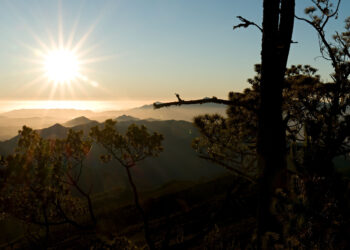
At 3,087m, the majestic Pico Duarte is the Caribbean’s highest and most dramatic peak. Found in the interior of the island, it’s a three-day round-trip to get to the summit. To make the most of the adventure, it is recommended to hike alongside a professional guide, who will have expert knowledge of the trails and camps found en route. Located in the Cordillera Central mountain range, you’ll ascend slowly, passing through pine forests and by gurgling streams. As golden swallows glide above you, you’ll soon take in the views of the vast mountain range, which stretches across the centre of the Dominican Republic and into Haiti. If you time it right, you’ll reach the mighty peak as the sun is rising, to take in the lush land laid out before you in all its glory.
2. Step back in time in Santo Domingo
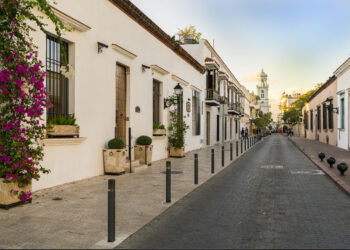
The UNESCO World Heritage City of Santo Domingo’s old town is not to be missed. Known as Ciudad Colonial (Colonial City), it was founded in 1498 and was built after Christopher Columbus’s arrival on the island in 1492. Stroll across the cobblestones to find the oldest existing cathedral in the Americas, which was founded in 1514 and completed in 1541. There’s also history at the Ozama Fortress, built in the 16th century as well as unique sights, such as the colourful and intricate architecture. This sense of history coexists with the energy of a modern-day metropolis, so you’ll also find fine-dining restaurants, late-night bars and art galleries.
3. Soak up the Damajagua Waterfalls
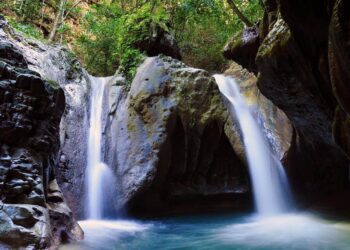
Found amid the Northern Corridor mountain range, Damajagua offers not one but 27 cascading waterfalls. To find them, you’ll trek with a guide through lush jungle to be greeted with the sight of crashing water and cerulean pools to swim in. Not for the faint-hearted, you can climb up a series of ladders and ropes to leap into the water below. For a more sedate experience, you can also swim in the series of pools and watch the water crashing from the cliffs above you.
4. Drink it all in with a cup of local coffee or a glass of rum

Known for its locally-grown Arabica coffee, the Dominican Republic’s coffee scene is truly embedded into its culture. The custom of coffee-making dates back hundreds of years, and is typically drunk from small cups, like an espresso. The sweet, strong brew can be enjoyed in countless coffee bars or with a visit to a mountain coffee plantation to get a further insight into the traditions. Meanwhile, for another liquid experience – this time somewhat stronger – local rums are also part and parcel of Caribbean life. Brands, such as Ron Barceló, established in 1930, Casa Brugal, founded in 1888, and Ron Matusalem, created in 1872, offer syrupy premium rums that have their own distinct flavour profiles.
5. Seek out local artisans

The island has a thriving arts and crafts scene and much of the work of local artisans reflect the country’s diverse heritage. In many towns and by roadsides, you’ll see craftspeople creating unique pieces from their workshops. Look out for jewellery makers who work with locally-sourced amber and blue larimar stones; basket weavers that use cane and guano to create handmade bags and hats; and woodcarvers who craft intricate chests and decorative objects. Many of the traditions, such as pottery making, have been influenced from Spanish and African descendants as well as the Taino, the Arawakan-speaking Indigenous people of the Caribbean.
6. Marvel at humpback whales
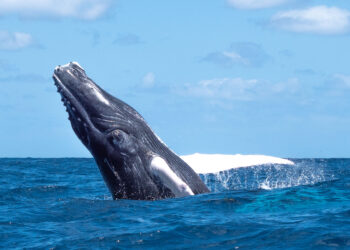
Found on the north-eastern coast of the Dominican Republic, Samaná Bay is a magical place. Part of the pristine Samaná Peninsula, visitors will find windswept, white-sand beaches framed by rainforests and verdant mountains. The beauty spot is made even more special every year, from January to March, when thousands of humpback whales visit to mate and birth calves. Visitors can book a licensed boat trip to see them from afar so as not to disturb the magnificent mammals in the wild.
7. Dance in Santiago de los Caballeros

Whether it’s during the carnival season (every February) or at the Festival of Merengue (late July to early August), you can’t escape Merengue – the celebrated dance and soundtrack of the Dominican Republic. In fact, no matter what time of year you visit, you’ll hear it on the streets, spilling out of bars and blasting from cars. Considered part of the national identity of the island (there’s even a National Merengue Day on 26 November), the quick-tempo Latin-style dance and music from the accompanying three-piece band is instantly infectious. Watch how the locals do it and be prepared to dance the night away.
8. Cook up a storm
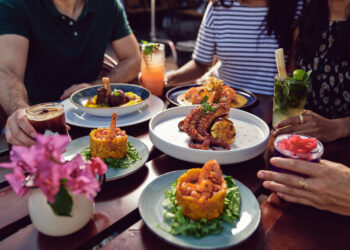
The food of the Dominican Republic is rooted in Taino, Spanish, African and Caribbean cuisine. Seek out a cookery class to learn how to make comida criolla (the phrase that locals use to describe their cookery). Typical dishes include rice and beans, known as Bandera Dominicana (or the DR flag), fried plantains and Sancocho, an aromatic stew made of beef, pork ribs and chicken and vegetables. It’s an eclectic take on soul food, all washed down with a glass of rum.
9. Arrive in style with Air Europa

With a flight time of just over nine hours from London Gatwick, it couldn’t be easier to reach the shores of the Dominican Republic. Air Europa offers comfort on board, the latest technology and flexible travelling. There’s a variety of meals to enjoy as well as the choice of XL seats and flatbeds in Business Class.
